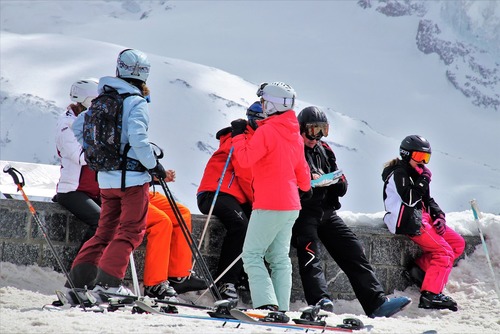Whether you're hitting the slushy spring snow or squeezing in those last few runs before the resorts close, nothing distracts from the thrill of snowboarding like uncomfortable boots. From cramps and blisters to numb toes, boot issues are not just a minor inconvenience; they can impact your performance and even increase the risk of injury.
Let’s dive into how you can end the season with comfortably fitting boots, ensuring every last run is as enjoyable as possible.
Â
Understanding Snowboard Boot Discomfort
Anatomy of a Snowboard Boot
A snowboard boot consists of several key components:
-
Shell - The hard outer part that provides structure and support.
-
Liner - The inner boot that offers insulation and comfort, often removable.
-
Footbed - The insole that sits inside the liner, providing arch support and cushioning.
-
Lacing System - How the boot is tightened—can be traditional laces, quick-pull laces, or a boa system.
Common Sources of Discomfort
Discomfort in snowboard boots can arise from:
-
Tightness or Looseness - Boots that are too tight can cause pain and restrict circulation, while too loose boots can lead to a lack of control and blisters.
-
Pressure Points - Incorrectly fitted boots can create painful pressure points or allow the foot to move inside the boot, leading to rubbing and blisters.
-
Inadequate Insulation or Support - Cold feet or poor alignment can be the result of insufficient insulation or lack of proper support from the footbed.
Uncomfortable boots can significantly detract from your snowboarding experience, reducing your control over the board and causing fatigue or injury. Ensuring your boots are comfortable is key to maintaining performance and safety.
Assessing Your Current Boots
Fit and Size
When trying on boots, they should feel snug but not painful, with your toes lightly brushing the end of the boot when standing. It's crucial to consider the width and volume of your foot, not just the length.
Wear and Tear
Examine your boots for signs of wear that might affect comfort. Look at the liners for compacted areas, check the soles for uneven wear, and assess the lacing system for ease of use and effectiveness.
Modification vs. Replacement
If your boots are generally in good shape but have minor issues, modifications might suffice. However, significant discomfort or structural breakdown often warrants a replacement.
Â
Practical Tips to Make Snowboard Boots More Comfortable
Breaking in New Boots
To avoid discomfort during your first few runs, it's essential to properly break in new boots if you opt for a brand-new pair. Start by wearing them at home for a couple of hours each day. Walk around, flex your feet, and use the lacing system as you would while snowboarding. This process helps the material conform to your feet, reducing break-in time on the slopes.
Customization Options
Enhancing boot comfort can often be achieved through a few key customizations:
-
Footbeds/Insoles - Many snowboarders overlook the importance of a good footbed. Upgrading to a high-quality orthotic snowboard boot insole can dramatically improve comfort. Look for options that offer not just better arch support but also heel stabilization and shock absorption. This can reduce fatigue and prevent arch pain or heel bruising.
-
Lacing Techniques - The way you lace your boots can significantly affect their comfort and fit. Experiment with different lacing techniques to find one that offers a snug fit without creating pressure points. For example, looser lacing near the toes and tighter around the ankles can provide both comfort and support. If your boots use a BOA system, adjusting the tension can also help achieve a better fit.
-
Heat Molding - Many modern snowboard boots come with heat-moldable liners. If you're experiencing discomfort, take your boots to a professional to have the liners custom molded to your feet. This service uses heat to expand and then shape the liners to the contours of your feet, providing a personalized fit.
-
Padding and Cushioning - For targeted relief from pressure points or to fill volume in a too-loose boot, consider adding foam pads or gel inserts. Placing them in specific areas like around the ankle, under the arch, or behind the heel can enhance comfort and fit.
Adjusting Boot Fit
Even with the right boots, adjustments might be necessary to fine-tune their fit:
-
Strap Adjustments - Many boots feature additional straps that can enhance heel hold and support. Adjusting these straps can improve the overall fit and reduce movements that lead to blisters.
-
Tongue Placement - Ensuring the tongue of the boot is properly aligned when you put it on can prevent uneven pressure distribution. Misaligned tongues can cause discomfort or even impede circulation.
Maintenance Tips
Maintaining your boots can also play a crucial role in keeping them comfortable:
-
Regular Cleaning - Clean your boots regularly to remove dirt and grime that can degrade the materials and lead to discomfort.
-
Dry Them Properly - Always dry you boots thoroughly after each use. Moisture in the boots can lead to cold feet and bacterial growth. Use a boot dryer or stuff them with newspaper to absorb moisture.
-
Check for Wear - Regularly inspect your boots for signs of wear and tear. Pay special attention to the soles and seams. Repair or replace parts as needed to maintain comfort and functionality.
Â
By implementing these tips, you can significantly enhance the comfort of your snowboard boots, making your days on the slopes more enjoyable and performance-driven.
Whether it’s through custom fittings, strategic adjustments, or diligent maintenance, the right approach can make all the difference in how your boots feel and how well they support your snowboarding adventures.
Give your snowboard boots a little bit of love this upcoming off-season, and you are sure to feel the difference when you hit the slopes next year.








